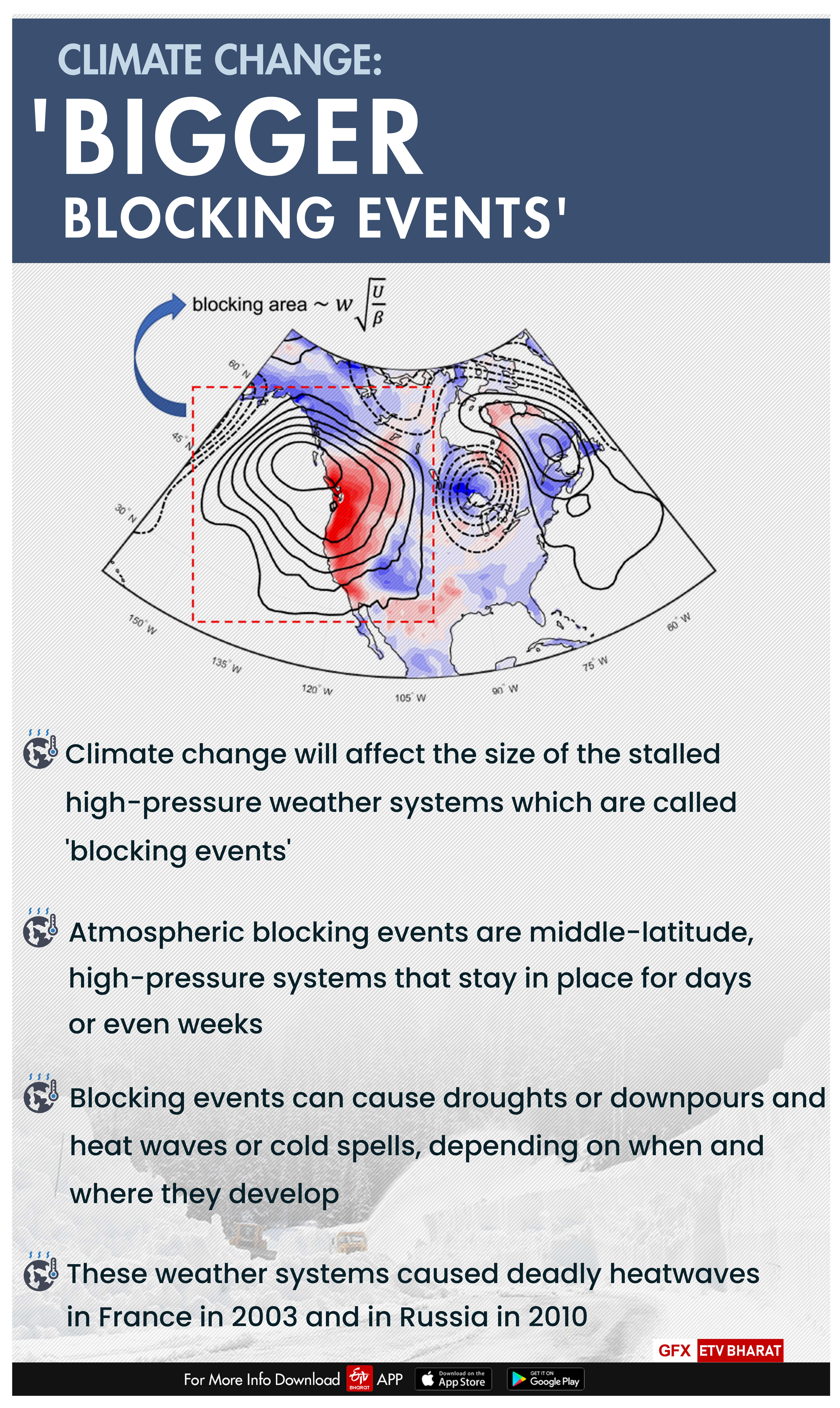Hyderabad: Some of the deadliest heat waves of the 21st century have been produced by the stalled high-pressure weather systems which are called 'blocking events'.

According to a Rice University study, climate change will increase the size of these weather systems, that caused deadly heatwaves in France in 2003 and in Russia in 2010.
Using data from two sets of comprehensive climate model simulations, Rice fluid dynamicists Ebrahim Nabizadeh and Pedram Hassanzadeh, and colleagues found that the area of blocking events in the northern hemisphere will increase by as much as 17% due to anthropogenic climate change.
Read: Children in India face higher health burden of climate change: Lancet report
The study was co-authored by Da Yang of Lawrence Berkeley National Laboratory and the University of California, Davis, and Elizabeth Barnes of Colorado State University.
Hassanzadeh, an assistant professor of mechanical engineering and of Earth, environmental and planetary sciences, uses computational, mathematical and statistical models to study atmospheric flows related to a broad range of problems from extreme weather events to wind energy.
Nabizadeh, a mechanical engineering graduate student in Rice's Brown School of Engineering, set out to answer the question two years ago. Using a hierarchical modelling approach, he began with experiments on a model of atmospheric turbulence that's far simpler than the real atmosphere.
The simple model, which captures the fundamental dynamics of blocking events, allowed Nabizadeh to do a great deal of exploration. Making slight changes in one parameter or another, he ran thousands of simulations. Then the data was analyzed using a powerful dimensional analysis technique called the Buckingham-Pi theorem, which is often used in designing large and complex engineering systems that involve fluid flows.
The goal was finding a scaling law, a mathematical formula that described the size of a blocking event using variables that climate scientists already study and understand. Nabizadeh started with scaling laws that have been developed to predict the size of day-to-day weather patterns, but he found that none of the variables was predictive for blocking events.
They also compared the simple-model results with the output of increasingly complex models of the Earth's weather and climate. Nabizadeh said the scaling law predicted changes in the size of future winter blocking events in comprehensive climate model simulations with remarkable accuracy.
Also, read: Last Arctic ice refuge is disappearing



